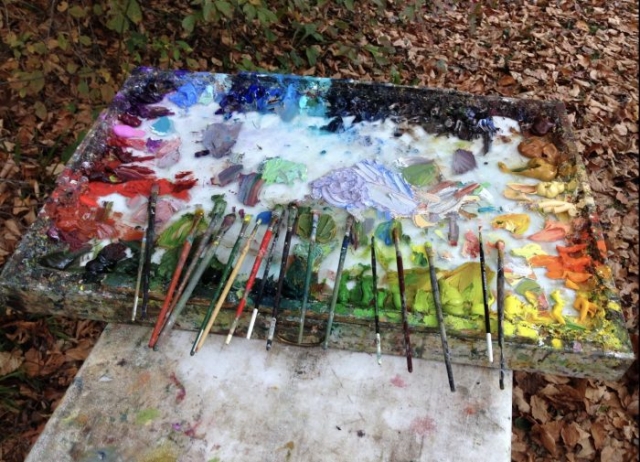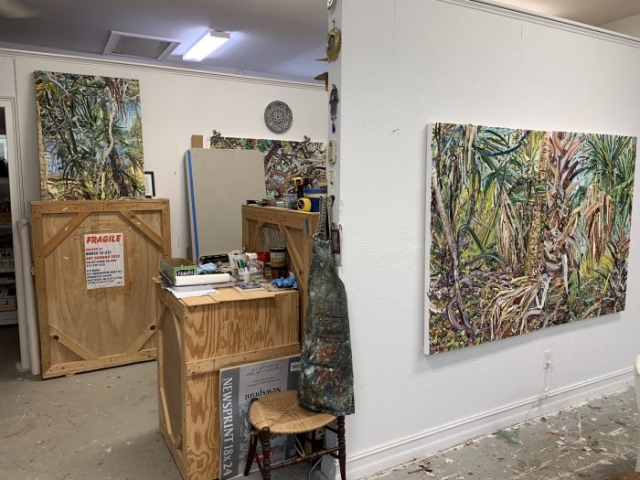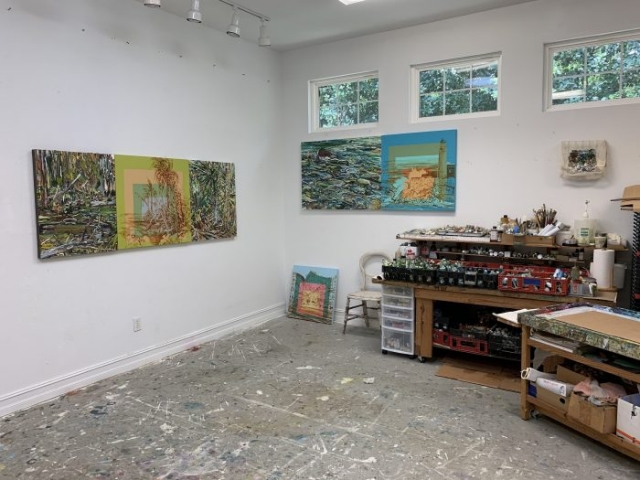
B20: Wiregrass Biennial showcases the region’s most talented contemporary artists, illustrating the South’s rich cultural heritage. The juried exhibition encourages innovative and progressive work that utilizes a variety of art forms and media and will feature paintings, sculptures as well as mixed media, new media and installation art. This year’s show features thirty-nine artists from eleven states.
B20 Artist Interview with Lilian Garcia-Roig
 B20: Wiregrass Biennial is a juried exhibition that encourages innovative and progressive work and showcases the South’s most talented contemporary artists, illustrating the region’s rich cultural heritage. Selected work utilizes a variety of art forms and media, including paintings, sculptures, mixed media, new media, and installation art. Three jurors chose from a field of over 130 entries for this year’s exhibition — the first virtual exhibition ever for WMA — featuring 39 artists from 11 states.
B20: Wiregrass Biennial is a juried exhibition that encourages innovative and progressive work and showcases the South’s most talented contemporary artists, illustrating the region’s rich cultural heritage. Selected work utilizes a variety of art forms and media, including paintings, sculptures, mixed media, new media, and installation art. Three jurors chose from a field of over 130 entries for this year’s exhibition — the first virtual exhibition ever for WMA — featuring 39 artists from 11 states.
We’ve shared a series of interviews with B20 artists during the run of the exhibition, and our next-to-last is from Tallahassee, Florida-based artist Lilian Garcia-Roig. Both in this interview and one she recorded live for WMA’s House Party for Art, Garcia-Roig discusses the logistics of her large-scale paintings, her common practice of plein-air painting, as well as landscapes from around the United States and her native Cuba, which are the focus of her work.
Where do you find inspiration for your artistic practice?
Pretty much every where I can spend a good amount of time at and have my paintings materials. I am particularly fond of thick, tangly landscapes that most people would not bother taking a second look at.

How difficult is it to get all of your supplies out into the wilderness? Do you set up camp until the painting is done?
I have 4X4 Tundra Truck with a camper top that house a special painting rack I built so that I can transport my wet works. My truck is essential a mobile painting studio, but I do need to be able to drive pretty close to a location to paint on a large scale.

Do you have places you return to frequently for plein-air painting sessions?
St Marks Wilderness Preserve is a local-ish favorite of mine. It takes a while to become familiar with your surroundings and figure out how to translate the experience of that specific place into paint. So when I go to a new place top paint, I try to be there at least a month. Some residencies, like MacDowell, are excellent for this.
How does living and working in the South impact your work?
I had to learn to manage dealing with bad sweltering wet weather; bugs, more bad humid weather, love bug plagues, hurricanes, and then nice weather in late fall & winter. The sharp shapes and opacity of many of the plants are interesting and challenging- the light does change on them substantially over the course of the day but you have to get their general shape and feel right- which is tricky to pull off.
Is there anything new you are working on that you’d like to share with us?
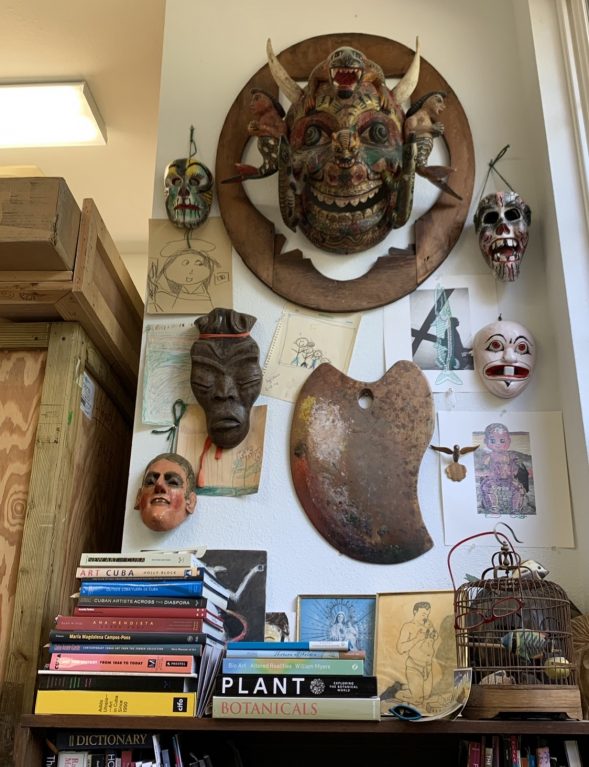 Yes, the pandemic travel restrictions and park closures made me have to rethink some projects I had wanted to do over the summer in New Orleans. That meant I had to figure out how to focus on making work in the conventional indoor studio. I started the “Hyphenated Nature Series” where I combined some of my perceptually-based, Florida-based paintings with my conceptually-based “Hecho con Cuba”.
Yes, the pandemic travel restrictions and park closures made me have to rethink some projects I had wanted to do over the summer in New Orleans. That meant I had to figure out how to focus on making work in the conventional indoor studio. I started the “Hyphenated Nature Series” where I combined some of my perceptually-based, Florida-based paintings with my conceptually-based “Hecho con Cuba”.
I also did a deep dive into researching the life and work of 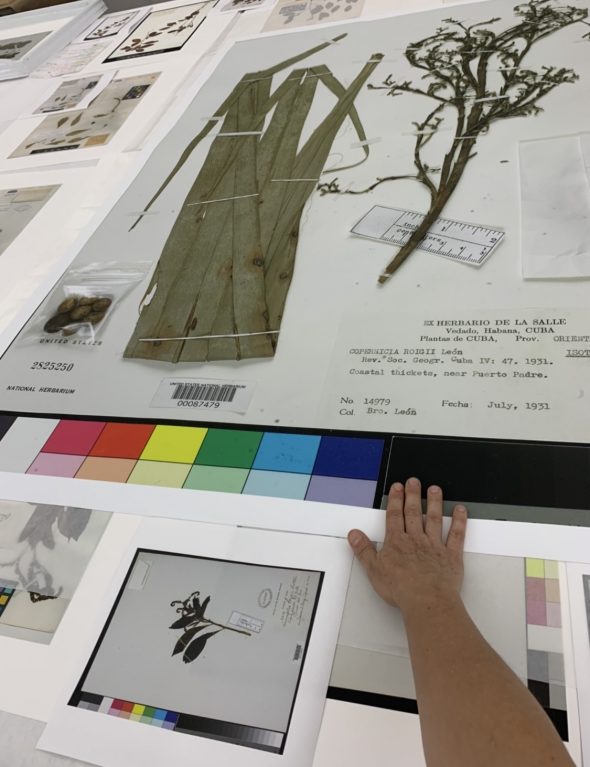 Juan Tomás Roig, who was my great, great uncle and is considered one of Cuba’s most influential botanists. He has had several species named after him and his textbooks on the native & medicinal plants of Cuba are still used in the University today. In addition, he fought against the destruction of the mountains around Pinar del Rio, a subject that many of the early Cuban landscape painters cherished dearly. I have been avidly re-collection some of the over 9,000 species he collected, with a focus on those either discovered by him or named after him. Many of his specimens are now scattered across some of the most rigorously studied collections in the world, at institutions like Harvard and the Smithsonian.
Juan Tomás Roig, who was my great, great uncle and is considered one of Cuba’s most influential botanists. He has had several species named after him and his textbooks on the native & medicinal plants of Cuba are still used in the University today. In addition, he fought against the destruction of the mountains around Pinar del Rio, a subject that many of the early Cuban landscape painters cherished dearly. I have been avidly re-collection some of the over 9,000 species he collected, with a focus on those either discovered by him or named after him. Many of his specimens are now scattered across some of the most rigorously studied collections in the world, at institutions like Harvard and the Smithsonian.
My hope is that by viewing and drawing and/or painting some of the plants and areas he studied and dedicated his life to, I hope to find fruitful overlaps with my broad interest in observation-based nature/landscape painting and Juan Tomás Roig’s specific interests in native Cuban plants. Although I am not certain what the visual outcomes of this line of research will yield, I expect it could provide the basis for a new creative direction in my work.
You can visit Lilian Garcia-Roig’s artist page on the B20: Wiregrass Biennial exhibition website here, and the artist’s own website here to see more of her work.


